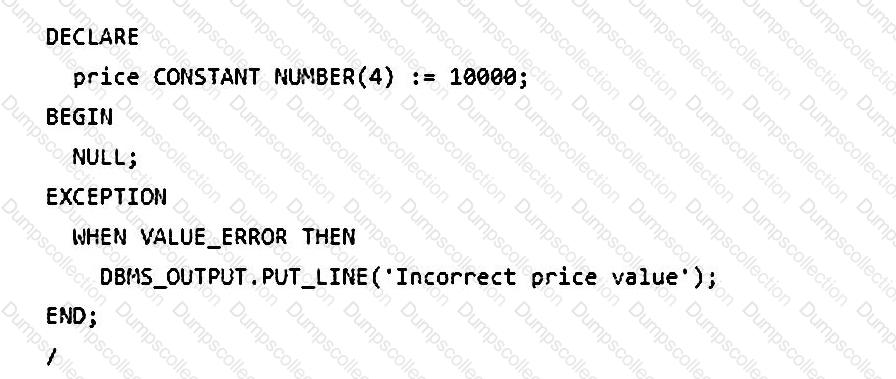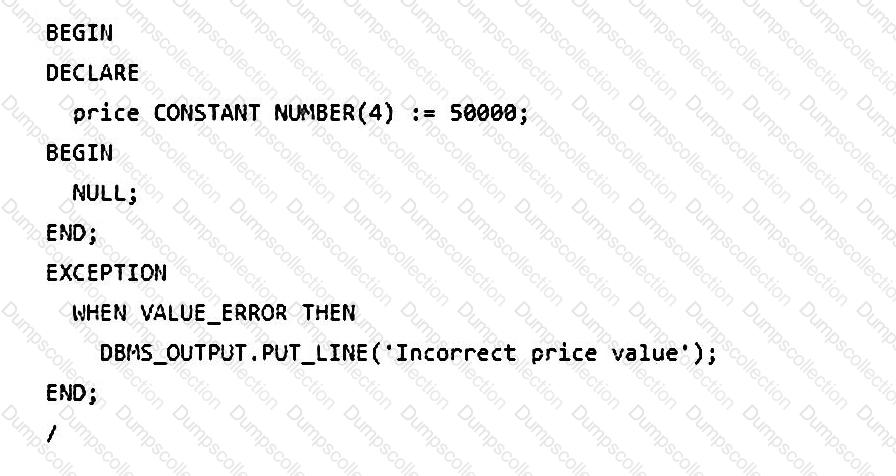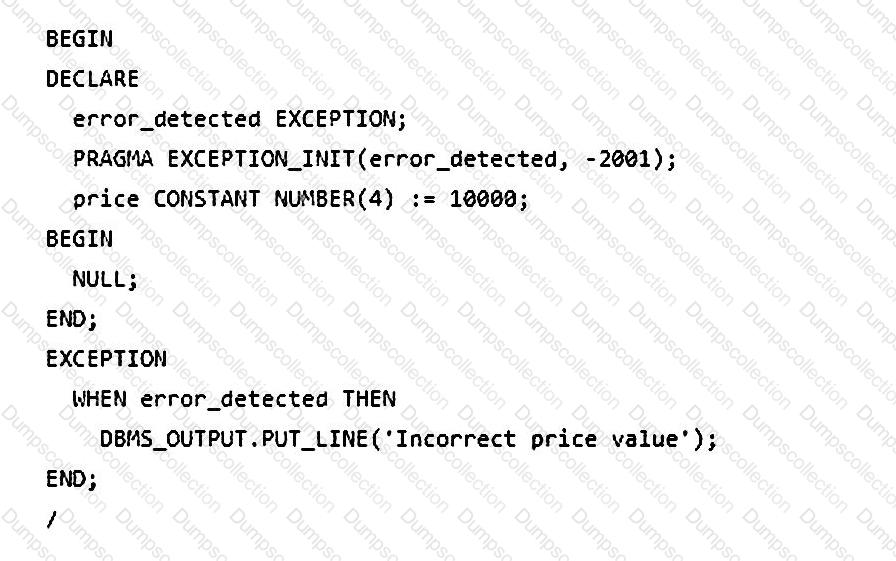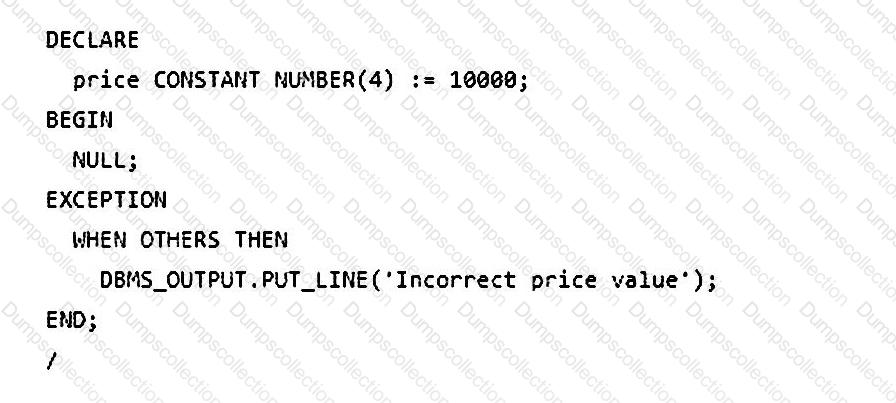Oracle Oracle Database 19c: Program with PL/SQL 1z0-149 Exam Dumps: Updated Questions & Answers (December 2025)
Which three are true about PL/SQL subprograms? (Choose three.)
Which two are true about packages? (Choose two.)
Which two statements are true about using the OR REPLACE clause when creating named subprograms? (Choose two.)
Which two are valid MODIFIER values for the PLSQL_WARNINGS parameter? (Choose two.)
Which three are true about the procedure overloading feature? (Choose three.)
Which two are true about implicit data type conversion? (Choose two.)
Examine these statements from a block of code:
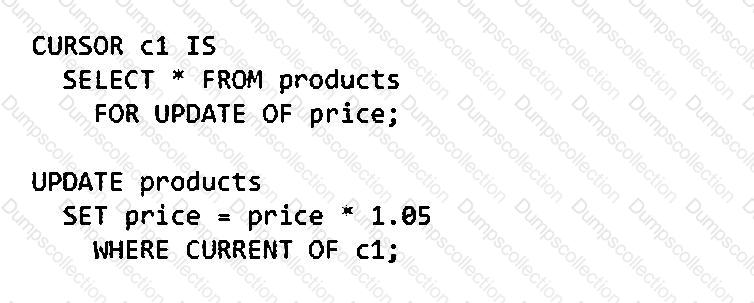
Which two are true? (Choose two.)
Examine the structure of the ora1.depts table:

Now, examine these statements issued by user ora1 which execute successfully:
Create or replace view dep_vu as select * from depts;
Alter table depts add dep_email varchar2(20);
Finally, examine this block of code executed by user ora1:
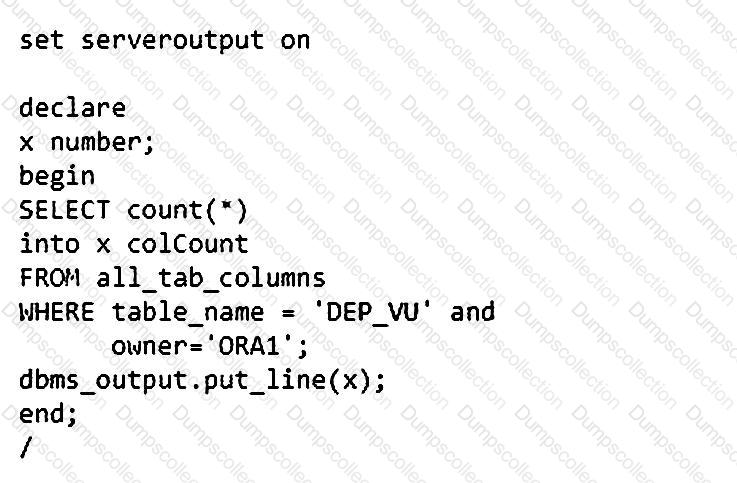
Which is true?
Examine these statements issued by user SH which execute successfully:
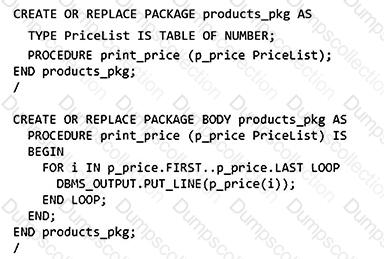
DBMS_OUTPUT.PUT_LINE(p_price(i)); END LOOP; END; END products_pkg; /
Now, examine this anonymous block executed by SH:

Which is true about the anonymous block?
Which block of code displays the error message “Incorrect price value”?

